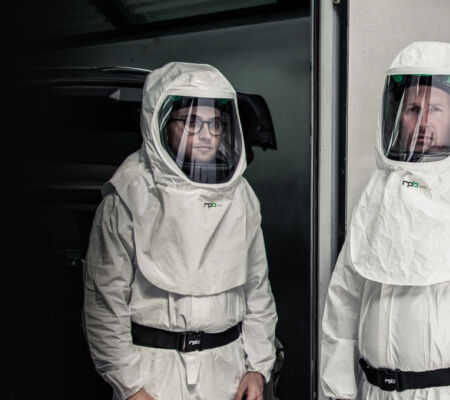
If you’ve reached this article, then you’re serious about safety, but you also care about cost.
Back to Articles & Resources View all General Respiratory Protection content
With so many different types of respirators available in the market, it’s hard to know where to start, let alone what is going to be best for your business. By reading this article, we hope to break down cost so you can decide what’s best for you. We’ve also created a calculator so you can get an idea of potential savings and productivity gains.
What creates the cost for cartridge masks?
If you’re using a tight-fitting respirator then, like a lot of things, the consumables create the biggest portion of your ongoing operation costs. Of course, there is the initial investment to consider, which is why on the surface a $50-80 mask doesn’t seem that bad, but when you look the actual cost breakdown of this over time, it’s not quite as cheap as it initially seems.
The frequency of use and how hazardous the environment is will determine how often cartridges need to be replaced. Depending on the brand of respirator you are using, these may cost between $15-30. You may replace these as often as every few days, or maybe once a month, it all depends on your application.
Another cost to consider with cartridge masks is fit testing. In order to meet the requirements of a respiratory protection program, tight-fitting respirators must be fit tested annually to ensure these are providing the correct level of protection. The cost of this will vary depending on which state you’re in and if you complete a qualitative or quantitative test.
If you’re wearing a respirator, there’s a high chance that you require additional items of PPE, such as safety goggles, hat hat, head socks, and protective suits.
What creates the cost for a supplied air system?
Like the cartridge mask, there are initial costs associated with setting up a supplied air system. First of all, you need an air compressor that is able supply Grade D breathing air as per ANSI Compressed Gas Association Commodity Specification for Air, as well as having the capacity to supply the correct amount of airflow. It’s also a requirement to provide filtration to remove any potential hazards from the supplied air. We recommended our RPB Radex Airline Filter system which removes moisture, odor, and particulates from the compressed air stream, this is priced from $330. If you’ve already got an existing air filtration system for your supplied air, then there’s a chance this can be used.
Your job will determine the type of headtop you need – headtops range from around $250-700. In addition to the respiratory protection these headtops provide, some headtops can also provide eye, face, head, and hearing protection all within the one system, which can bring the overall cost down as you’re not having to buy other items of PPE.
Once your supplied air system is set up, ongoing costs are very low. Filters need to be replaced generally after 3 months at a cost of $75. However, these systems can support up to 6 people at one time which brings this number down even more per operator.
Benefits of supplied air respirators
Because the air is supplied to your headtop, this creates positive pressure which prevents the ambient air from entering your breathing zone, allowing you to have a loose-fitting seal, and removing the need for fit tests. Supplied air also reduces the effects of fatigue as you can breathe as you normally would, alleviating you of the effects of fatigue from negative pressure filtration. The ability to incorporate climate control for the incoming air adds another level of comfort to further reduce fatigue and increase your productivity.
If you’ve got this far, then we’re sure you want to see the potential savings and productivity gains from switching to supplied air. Check out our calculator and see for yourself if this is the right switch for you!
Calculate your savings